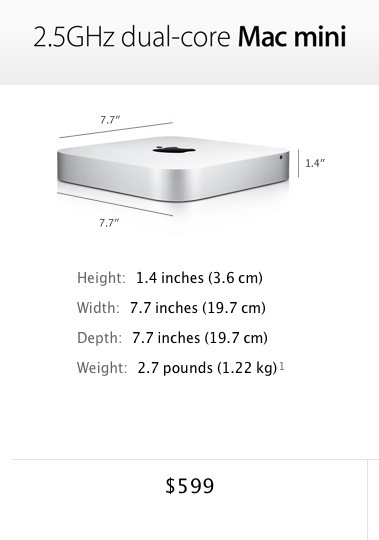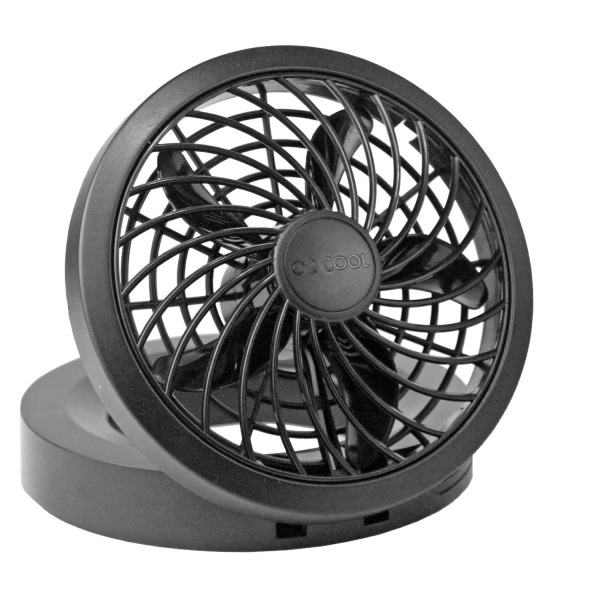Barely acceptable.

A year ago I warned against the MacMini 2011 for photographic use. Modestly powered and horribly overpriced, you could build a far more robust and expandable Hackintosh for less. Much less.
The main changes in the 2012 model are that it’s $200 less for the i5 base model, the cooler Ivy Bridge CPU has replaced the Sandy Bridge and the competent HD4000 integrated GPU drives the graphics. You still need to add a keyboard, mouse and Display Port-to-DVI cable. Buying Apple’s Dual Link (30″ displays) at $99/Single Link $29 is insanity, when you can buy one from Amazon for $12/$10 – I use one with my MacBook Air and confirm it works perfectly. You also need to max out the RAM, the Mini coming with a paltry 4GB of 1600GHz, up from 1333GHz from last year. The removable base plate in the Mini makes RAM swapping easy and Crucial will charge you $85 for 16GB whereas Apple will get $300 from fools. Looks like RAM gouging, an old habit of Apple’s which had gone away for a while, is back.
But the best news about the Mini is that it comes without Apple’s ghastly glossy screen known to every iMac user since 2007. You can have your pick of displays from decent 1920×1280 21.5″ versions from the likes of Assus and Acer at $140 to megabuck 27″ displays where the Dell Ultrasharp U2711 2560×1440 remains the best value at $800. All cheaper than Apple’s glossy 27″ abomination at $1,000.
The other significant enhancement is to replace the chintzy 500GB internal HDD with a $100 128GB SSD to store the OS and applications, which will return a significant increase in operating speed. Forget cockamamie dual internal drive cradles. That will simply make your machine hotter. Use an USB3 external enclosure for the 500GB drive you just removed. Drive replacement in the Mini is a tad tougher than RAM replacement, but reference to the excellent iFixit guide will get you there. Geekbench64 for the 2012 MacMini comes in at 7,500. For comparison my HackPro HP100 comes in at 12,000 with the i5 and 16,000 with the i7, both scores with the older Sandy Bridge CPU modestly overclocked and a five year old Nvidia GTX9800+ discrete GPU. That machine runs cool as a cucumber compared to any Mac. The poor scores of the 2012 Mac Mini are accounted for by the fact that Apple is using the compromised mobile version of the i5 CPU rather than the full desktop version used in my Hack Pro. The same i5 CPU in my 2012 MacBook Air (4GB RAM) comes in at 6,300 or so, for comparison. Bottom line? the performance of the 2012 Mac Mini is on a par with that of a four year old using the three generations old Core2Quad CPU.
AppleCare? Sure, go ahead and pay $149 more to insure the Mini for two more years. Probably a wise move given the egregious out-of-warranty repair costs. The parts in the Hackintosh mostly come with 3-5 warranties, the exception being the Intel CPU which is covered for one year. Then again, I have yet to have anything in my three Hackintoshes fail. Oh! wait, the clips on the Antec Sonata III case’s dust filter fractured and Antec sent me a new one free after some 30 months of service. Toyota reliability.
So $600 + $85 for proper RAM gets you a 2.5GHz Ivy Bridge machine which will work fine with Photoshop and Lightroom but is likely marginal with video processing. For the latter, I would remove the base plate, mount the Mini vertically, and point an external fan at the innards. A 5″ $10 external fan should fit the space nicely and is easily powered off a 12 volt power adapter of which you likely have three dozen in the cardboard box under the stairs. The sub-optimal cooling of the enclosure will be greatly enhanced. For that matter there are even USB-powered fans available for some $12. Forget about trying to upgrade the i5 CPU for an i7. It’s soldered in, and Apple’s $200 premium for the i7 makes no sense.

Typical USB powered 5″ add-on fan.
However, last year’s advice remains sound – for this sort of money and a little effort (and it’s easier every year) a Hackintosh will make for a superior machine in every way except maybe looks. And when you decide to upgrade to an i7 CPU for heavy video processing, lots of internal drives, and so on, the Hack rules. Click on Sitemap->Photography->Hackintosh, above, to learn more.
Alternatives? Nothing could be worse than the new iMac for seriously hard photographic use, and Apple has abandoned the dated and overpriced MacPro. They have made noises about refreshing the MacPro in 2013 but I’ll believe that when I see it.